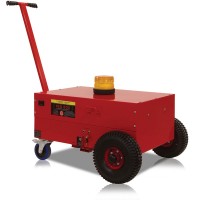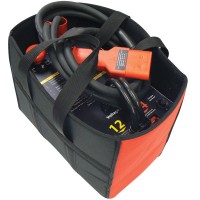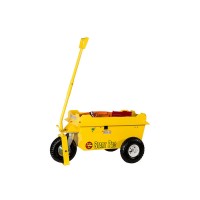1-877-795-2278 | info@aircraftspruce.ca
Aircraft Spruce Canada
Brantford, ON Canada
Corona, CA | Peachtree City, GA
Chicago, IL | Wasilla, AK
Aircraft Spruce Canada
Brantford, ON Canada
Corona, CA | Peachtree City, GA
Chicago, IL | Wasilla, AK
FREE SHIPPING ON ORDERS OVER $699 (SOME EXCLUSIONS APPLY) | 877-795-2278
Powervamp GPU 2400 Twin 24V Aircraft Start Unit
$7878.00/Each
Part# 11-16342
MFR Model# 2210254
MFR Model# 2210254
- JUMP TO
- Overview
- Features
- Specifications
- Reviews
- Q&A
Overview
|
Size and weight are important considerations for hand-portable aircraft start units. Situations exist where additional battery capacity and performance is required while retaining the essential benefits of mobility or ‘hand-portability’. The solution, pioneered by Powervamp more than 20 years ago and now adopted throughout the industry, is to connect two units in parallel. Designed for service in the field, Powervamp’s heavy-duty stainless steel cased twin packs are recognized by relief agencies operating in extreme environments as the best portable aircraft start unit for DC aircraft and helicopters requiring a 24V DC or external 24/48V DC parallel/series start, these twin units are in use worldwide. Designed in collaboration with Powervamp, the GPU 2400 Twin uses two GPU 2400 units connected in parallel by a plug-in polarized heavy-duty cable to double the battery capacity from 32 Ah to 64 Ah for increased starting capability. Using an optional second Nato lead set, the units can be deployed individually or used where an aircraft requires a parallel start. Each unit includes a heavy-duty push/pull isolator switch with replaceable copper contacts ensuring maximum power transfer with minimum voltage drop. The lockable ‘R’ clip ensures the aircraft start unit is cleared for air transportation. The GPU 2400 Twin can be split into separate modules for ease of transport. In regular use for emergency power and turbine starting, the GPU 2400 is ideal for providing the first start of the day. Fitted with dual 12V DC automatic 3-stage internal chargers for maximum cell longevity, these aircraft start units will start all APUs, large corporate jets and commuter aircraft with shaft turbines. Each GPU 2400 is fitted with a solid state voltmeter to monitor battery voltage and is supplied with a heavy-duty canvas protective jacket. |
Features
- High powered sealed lead acid AGM batteries
- Cleared for air transportation
- Internal chargers with LED status indicators
- All-welded stainless steel case with removable back panel
- Controls protected by full length handle with reinforced side buttresses
- Aircraft cable with heavy-duty NATO connector
- Heavy-duty output isolator with replaceable contacts
- Security ‘R’ clip isolator lock
- Auxiliary socket for charging and plug-in accessories
- Solid state voltmeter
- Fitted with rubber anti-slip, shock absorbent feet
- Double trolley
- Heavy-duty canvas protective jackets
Specifications
- Peak amps**: 4800A
- Nominal voltage: 24V DC
- Standing voltage: 25.6V DC
- Amp/hour capacity: 86 Ah @ 10 hr rate (20°C)
- Operating temp: -40°C to +50°C (-40°F to +122°F)
- Case: Welded, non-magnetic stainless steel
- Voltmeter: Solid state LED, IP65
- Aircraft cable: 2m (6ft) heavy-duty rubber NATO connector
- Parallel cable: Heavy-duty polarized connector
- Charger: 4 x 12V, 2.3A 3-stage internal charger/90–264V AC/47 –63Hz/single phase
- NCAGE: KD628
- Length: 21" (555mm)
- Width: 18" (465mm)
- Height: 44" (1,120mm)
- Weight: 191 lbs. (85kg)
Q&A
Please note, Aircraft Spruce Canada's personnel are not certified aircraft mechanics and can only provide general support and ideas, which should not be relied upon or implemented in lieu of consulting an A&P or other qualified technician. Aircraft Spruce Canada assumes no responsibility or liability for any issue or problem which may arise from any repair, modification or other work done from this knowledge base. Any product eligibility information provided here is based on general application guides and we recommend always referring to your specific aircraft parts manual, the parts manufacturer or consulting with a qualified mechanic.

 Aircraft Spruce Canada
Aircraft Spruce Canada














